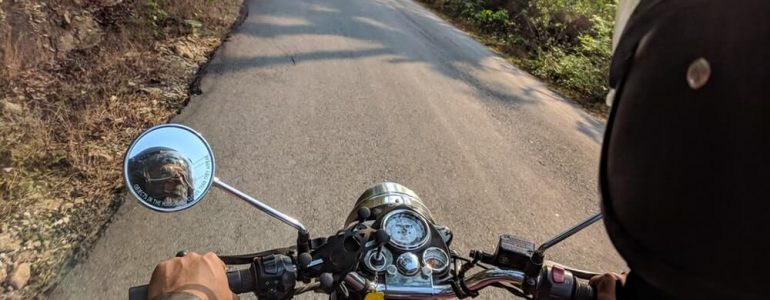The first times riding a motorcycle feel exhilarating and amazing. You feel as if you can do anything and go anywhere.
But don’t forget that you are still a beginner. There are certain riding skills that no amount of training can give you. You only learn them from experience.
So ditch the overconfident attitude and err on the side of caution no matter how adventurous you are feeling. Make safety, not fun, your priority.
Here are some safety tips that every new rider should keep in mind. I won’t touch on some obvious ones like having the right gear on. That should be second nature.
I’ll focus more on other less obvious but no less important motorcycle safety tips for new riders that will make you a better rider and get you home in one piece.
1. Get A Bike You Can Handle
Modern motorcycles, even those with smaller displacements, are much faster compared to similar-spec bikes from several years ago.
Many beginners make the mistake of going for something that they can’t handle safely. Superbikes are cool and all but they are dangerous if you don’t have years of riding experience under your belt.
For beginners, a 250cc-300cc bike is perfect for commuting. It is quick enough without being blazing fast. If you are planning to do some highway or cross-country riding, you can go a bit higher to the 500cc-750cc range.
Make sure you can sit comfortably on the bike with both your feet flat on the ground. Ensure that it’s not too heavy, which can make controlling it difficult.
Once you’ve ridden your starter motorcycle for 3-5 years, you can consider upgrading to something a bit more powerful and sportier.
2. Do A Pre-Ride Check
Don’t just hop onto your motorcycle and take off. You are needlessly putting yourself in danger. What if a crucial part fails when you are speeding on the highway?
Have a pre-ride inspection checklist and make sure you work your way through it before you get on your bike.
Here are some of the most important checks to make.
- Check that the tires are properly inflated and that the rubber is in a good condition. Look for rocks, glass and other small stuff that might be embedded in the treads.
- Test the brake levers to make sure they are nice and tight and check the brake pads too.
- Check fluid levels to make sure they are where they should be. Also check the seals and fluid housing for any leaks or wearing.
Other important things to check include the lights, throttle, chain tension and riding safety gear.
3. Ride Defensively
Assume that everyone else on the road is out to get you.
It’s obviously not true but that’s how you should think when riding. Not only will it make you more cautious, you are also more likely to spot trouble ahead of time and avoid it.
Pay extra attention at red lights, near allies, at intersections and in heavy traffic.
When you see a car slow down without a blinker on, assume it’s turning and the driver has forgotten to indicate. If you are coming up to a junction, assume cars from other directions can’t see you and slow down or stop. If you are passing a stopped car, give it a wide berth assuming that the door will open just as you pass.
Don’t just look out for cars; watch out for people too. Many pedestrians have a certain blindness to motorcycles and will step out in front of you without warning.
4. Safety Accessories
In addition to a helmet, gloves, knee pads, proper shoes and other riding gear, consider adding on more safety accessories.
There are some pretty pricey accessories out there especially if you do high-risk stuff like racing and highway riding. For instance, there is the Tech-Air Airbag system by Alpinestars. It’s a riding jacket with airbags and costs over a thousand pounds.
But there are also cheaper accessories ideal for everyday riders. They include chest protectors, back protectors and knee sliders.
Don’t forget about your bike’s safety too. Get a good quality security chain for motorcycles that will protect your bike from theft. It also may be a good idea to add a hi vis jacket into your tail bags.
5. Keep Learning And Practicing
Finally but just as importantly, never think you are too good to stop learning. There are always new techniques and safety measures to practice.
Take several local riding courses to hone your skill. Skills like emergency evasive manoeuvres, high speed braking and advanced defensive riding can save your life on the road.







